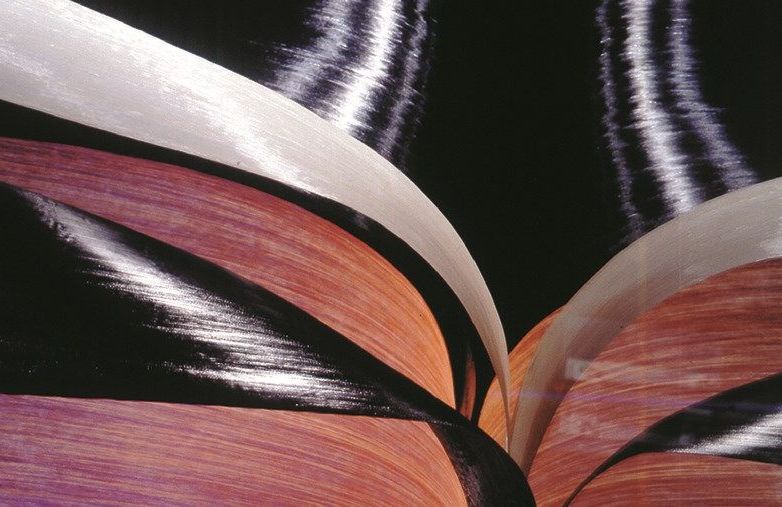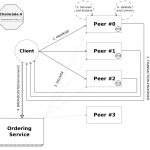Laure Bouquerel wins the SAMPE France competition for her thesis on composite materials for aeronautics
Simulating deformations during the molding stage in a new composite material for the aeronautics industry: this is the subject of Laure Bouquerel’s research at Mines Saint-Étienne as part of her CIFRE PhD thesis with INSA Lyon. The young researcher, winner of the SAMPE France competition, will present her work at the SAMPE France technical days in Bordeaux on 29 and 30 November 2018 and will compete for the World Selection in Southampton during the European meetings in September.
An aircraft must be lightweight… But durable! The aircraft’s primary parts, such as the wings and the fuselage, form its structure and bear the greatest stress. These pieces, which were initially manufactured using aluminum, were progressively replaced by composite materials containing carbon fibers and polymer resin for enhanced mechanical performance and resistance to corrosion, while also reducing the mass. The mass issue is at the heart of the aeronautical transport industry: savings on mass leads to a higher payload proportion for aircrafts, while also decreasing fuel consumption.
Traditionally, composite materials for primary parts are molded using indirect processes. This involves using a set of carbon fibers that are pre-impregnated with resin. The part is manufactured by an automated process that superimposes the layers, which are then cured in an autoclave, a pressurized oven. This is currently the most widely used process in the aeronautics industry. It is also the most expensive, due to the processes involved, the material used and its storage.
“Hexcel offers a direct process using a new-generation material it has developed: HiTape®. It is a dry, unidirectional reinforcement composed of carbon fibers sandwiched between two thermoplastic webs. It is intended to be deposited using an automated process, then molded before the resin is injected,” Laure Bouquerel explains. The researcher is conducting a thesis at Mines Saint-Étienne on this material that Hexcel is working to develop. The goal is to simulate the molding process involving the stacking of carbon fiber reinforcements in order to better understand and anticipate the deformations and defects that could occur. This work is what earned the young materials specialist an award at the SAMPE France* competition.
Anticipating defects to limit costs
“The carbon fibers in the HiTape® material are all aligned in the same direction. The rigidity is at its maximum level in the direction of the fibers. Several layers are deposited in different directions to manufacture a part. This offers very good rigidity in the desired directions, which were identified during the design phase for the structure,” Laure Bouquerel explains. Yet due to the HiTape® material’s specific structure and the presence of the thermoplastic web, specific deformations occur during the molding phase. The tension in the reinforcement is predominant and wrinkling can occur when the material is bent. Finally, friction can occur between the various reinforcement layers.
“The appearance of wrinkling is a classic. As they become wrinkled, the fibers are no longer straight, and the load placed on the material will not be transferred as well,” the researcher observes. “These wrinkles also cause the development of areas that are less dense in fiber, where the resin will accumulate after the molding stage, creating zones of weakness in the material.” As these deformations appear, the final part’s overall structure is weakened.
The aim of Laure Bouquerel’s thesis work is to digitally simulate the molding process for the HiTape® material in order to identify and predict the appearance of deformations and then improve the molding process through reverse engineering. Why the use of digital simulation? This method eliminates all the trial and error involving real materials in the laboratory, thus reducing the time and cost involved in developing the product.
A great opportunity for the young researcher
A graduate of Centrale Nantes engineering school, the young researcher became specialized in this field while working toward her Master’s in advanced materials from Cranfield University in England. After earning these two degrees, she further defined her vocation during her work placement year. Laure Bouquerel began her career with Plastic Omnium, an automobile parts supplier in Lyon, and with Airbus in Germany, which explains her specialization in composite materials for the aeronautics industry.
As a winner of the SAMPE France competition, the PhD student will present her work at the SAMPE France technical days in Bordeaux on 29 and 30 November and will participate in the SAMPE Europe competition in Southampton from 11 to 13 September. This will provide a unique opportunity to give visibility to her work. “It will be an opportunity to meet with other industry stakeholders and other PhD students working on similar topics. Talking with peers can inspire new ideas for advancing our own research!”
[box type=”info” align=”” class=”” width=””]
*An international competition dedicated to materials engineering
SAMPE (Society for the Advancement of Material Process Engineering) rewards the best theses on the study of structural materials through an international competition. The French edition, SAMPE France, which Laure Bouquerel won, was held at Mines Saint-Étienne on March 22 and 23. The global competition will be held in Southampton from September 11 to 13 during the SAMPE Europe days. The aim of these international meetings is to bring together manufacturers and researchers from the field of advanced materials to develop professional networks and present the latest technical innovations.[/box]





Leave a Reply
Want to join the discussion?Feel free to contribute!